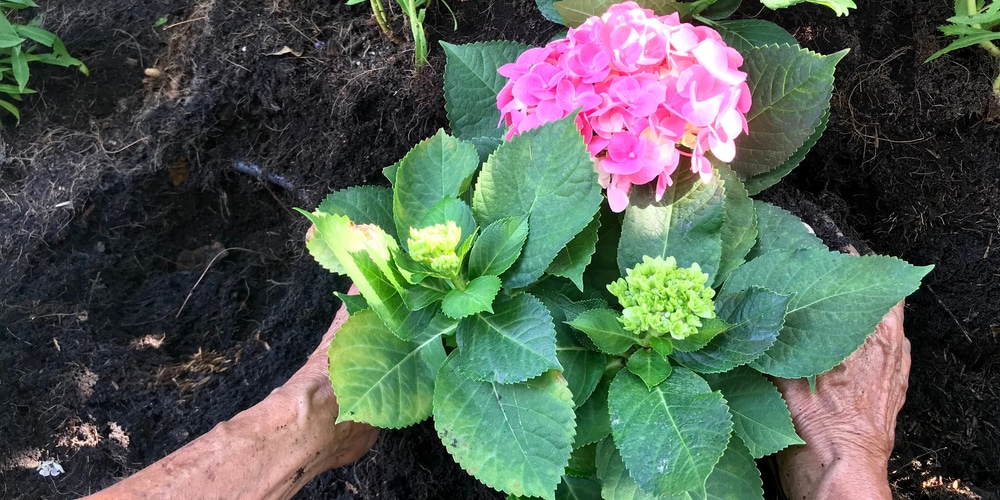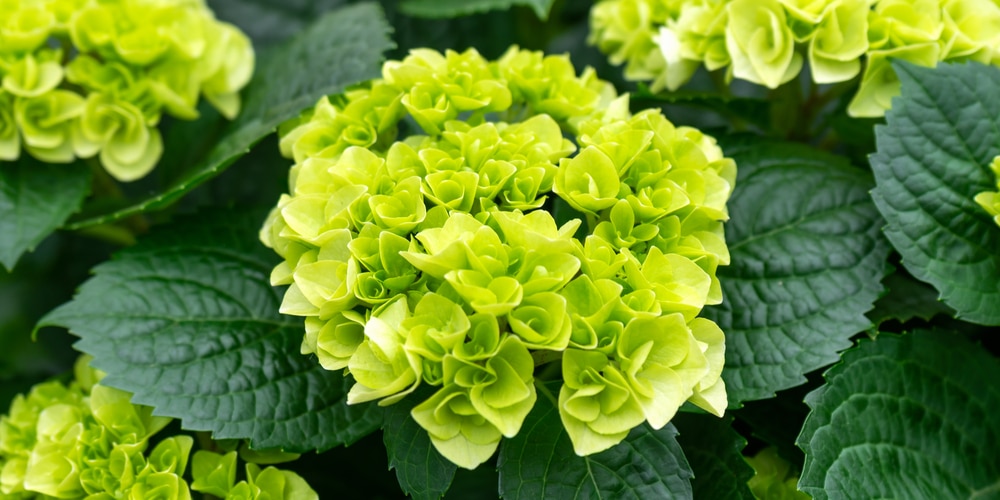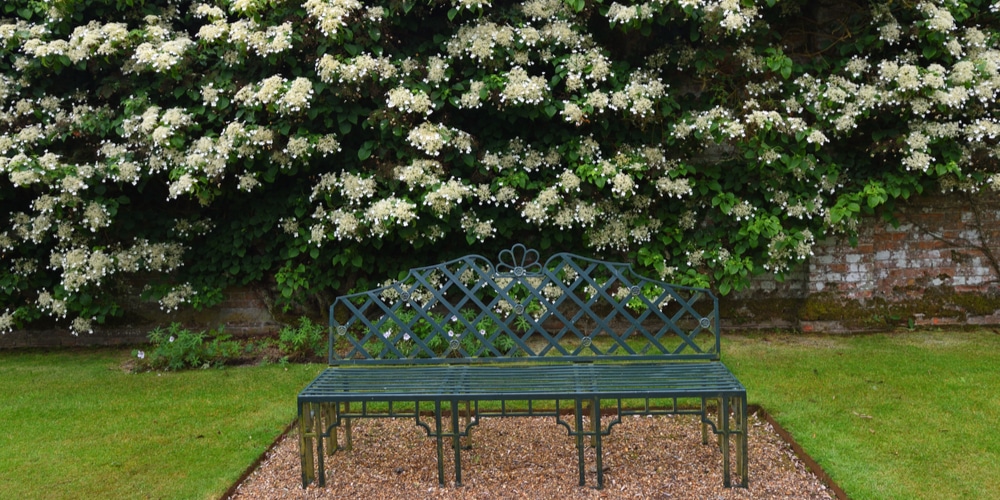Hydrangeas are temperamental and a bit dramatic, especially if you are trying to grow them in an area where the soil is not made for them. However, they make up for their finicky ways with large, undeniably beautiful, showy blue, pink, or white inflorescences sure to attract the eye.
If you live in Texas and are considering adding wonderment to your flower garden with hydrangeas, you might be wondering whether it is possible to keep hydrangeas healthy and flowering in this sunny state. This is very important considering that these shrubs require a lot of water to thrive.
Well, it is entirely possible to establish a thriving hydrangea garden in Texas. Read on to know when and how to plant hydrangea flowers in Texas.
When is the best time to plant hydrangeas in Texas?

Whether big or small, pink or blue, bigleaf or panicle, there’s truly a hydrangea to fit every garden. That said, the success of your shrubs immensely depends on when you tuck them into your landscape.
Well, the best time to plant hydrangea is during mild weather. In Texas, you can plant in late spring after the dangers of frost have passed or in early fall when night temperatures start dropping but at least six weeks before frost. When exactly to plant your hydrangea depends on your planting zone and local weather forecasts.
Texas is a massive state spanning USDA plant hardiness zones 6b to 10a. Each planting zone presents its unique weather and growing condition. The last frost dates are February 1 to May 15, whereas the first frost dates range from October 15 to January 1, all depending on which USDA planting zone you live in.
Planting hydrangeas in late spring or early fall when the weather is mild gives them enough time to establish before extreme heat or cold sets in. In Texas, where the type of weather usually depends on the amount of sunshine that hits the ground, it is best to plant hydrangea in early fall.
When planted in early fall, they will have enough time to establish new healthy root systems before blooming in spring.
Notably, while most hydrangeas will do well in North Texas, some thrive in other regions but will require special attention.
Planting hydrangeas in Texas
Hydrangeas can be a little tricky and fussy. To get them thriving and healthy, you need to plant them in ideal conditions. So, where do you start?
1. Choose a planting site
The key factor to consider when choosing a planting site for hydrangeas is the fact that they don’t like direct sun. They love and will thrive in the morning sun and partial shade, meaning they need protection from Texas’ scorching afternoon sun.
Ideally, you should plant hydrangeas on the north or east side of your home. This will allow them to receive the morning sun to hit them; then your house will throw some shed over them in the afternoon.
Although hydrangeas thrive in partial shade, avoid planting them directly under trees as they will be competing for water and nutrients.
The planting site should also be well-draining and with enough space to accommodate the plant’s width.
2. Prepare soil and dig planting holes
Once you have a site offering ideal growing conditions, the next thing is to make sure the soil is in good shape. While Texas features a variety of soil types, it is undeniable that the soil in many areas of Texas is the heavy black clay variety. That’s why you need to work on the soil before planting.
Hydrangeas do well in a rich, well-drained loamy soil. To prepare the planting site, dig a hole about 15-inches deep, removing all the existing soil. Refill the hole with a mixture that is half compost and a half removed soil with a sensible amount of expanded shale.
Of significance, while hydrangeas need plenty of water to thrive, they can’t tolerate soggy, poorly draining soil as they are vulnerable to root rot.
3. Planting your hydrangeas
Gently remove your hydrangea from its container and drop it into the hole. You need to plant it such that it is the same level or slightly higher than surrounding soil. After planting, gently pat the soil to remove air pockets.
How to care for hydrangea
The appearance of hydrangea may tempt you to think that they are high maintenance, but with the right conditions, the shrubs are fairly easy to care for. Here are some caring tips
- Mulching: A layer of mulch at the base of your hydrangea plants will help keep the soil moist and cool, ultimately keeping your flowers hydrated in Texas heat. 2-4 inches of organic mulch is preferred because it will decompose over time to add nutrients into the soil and improve soil texture.
- Watering: “Hydra” means “water,” so you can be sure that hydrangeas need water to thrive. After planting, water about three times per week to encourage a new root system. Once established, 1 inch of water every week will help keep the plant happy and healthy. When it comes to watering, it is best done in the morning.
- Applying fertilizer: While hydrangeas will do well in rich soil, applying fertilizer can make a difference. Each variety has different needs, so do your research to know the right timing and fertilizing requirements for your plants.
- Pests and diseases control: Although pests are not a serious issue on hydrangeas, some cultivars are more vulnerable to disease. For this reason, you need to keep an eye on your plants and address issues as they appear. It would be best to look for cultivars with resistant traits.
The best hydrangea varieties for growing in Texas
Known for their fabulous spectrum of colors, hydrangeas come in different varieties. However, not all can tolerate Texas’s intense heat. Here are some of the varieties that will likely thrive in your Texas flower garden:
- Oakleaf hydrangeas: This is an outstanding variety for Texas gardens. It is deciduous and thrives in partial shade but will tolerate heat. They bloom into white flowers on cone-shaped clusters.
- PeeGee hydrangea: These are genuine attention grabbers that bloom into white flowers that gradually turn pink.
- Endless Summer hydrangea: This is a big-leaf variety that has proved to withstand Texas’s unforgiving conditions.
- French Hydrangeas: This classic cultivar blooms into large, round blossoms that come in a range of beautiful colors. You can play around with soil pH to get them to bloom into your favorite color.
How to plant hydrangeas in Texas: Conclusion
Hydrangeas are an old garden favorite. However, growing them in the Lone Star state is not easy. Plenty of Sunshine and humidity levels in Texas makes it relatively hard to establish a thriving hydrangea garden. All in all, it is possible to grow these showy flowers here. Hopefully, you will find this article helpful in your search for how to grow hydrangea in Texas.
Related Article: Fall Hydrangeas


